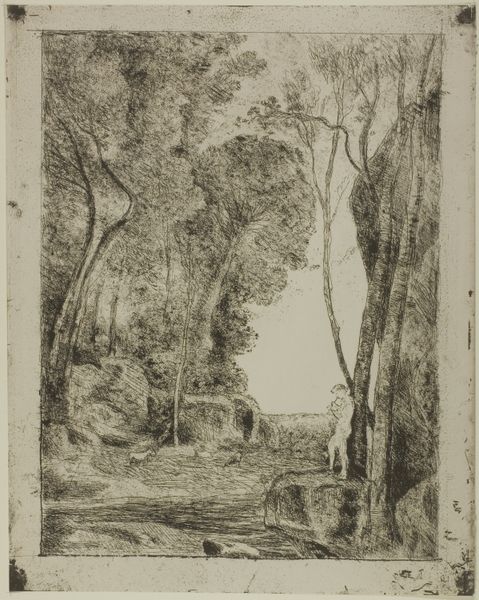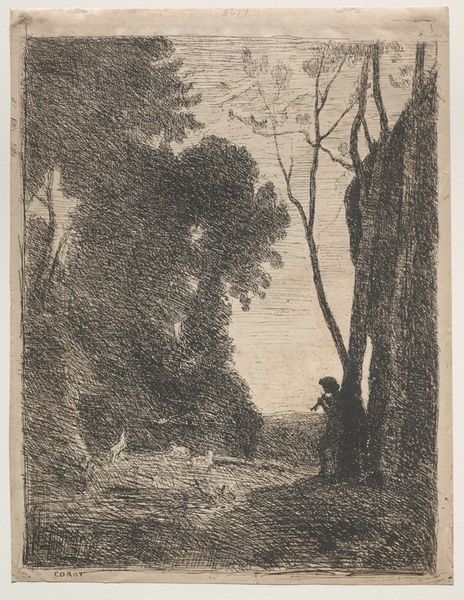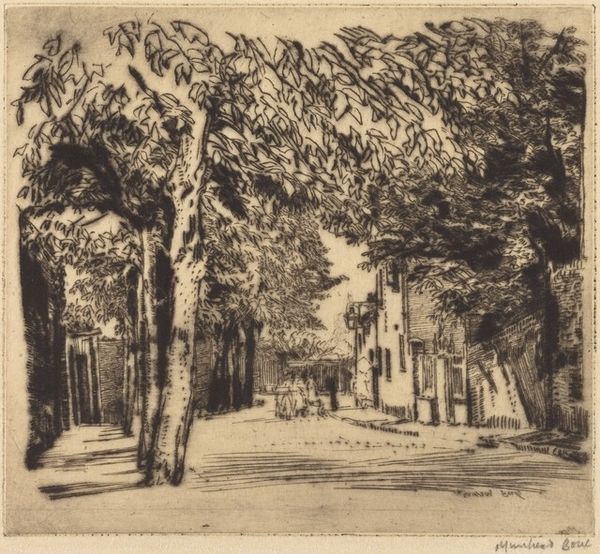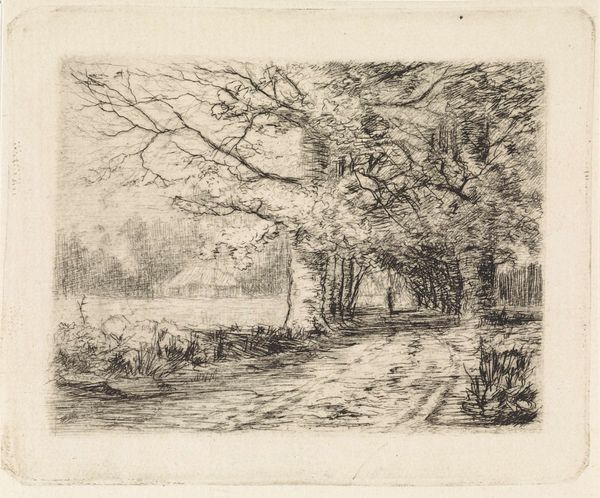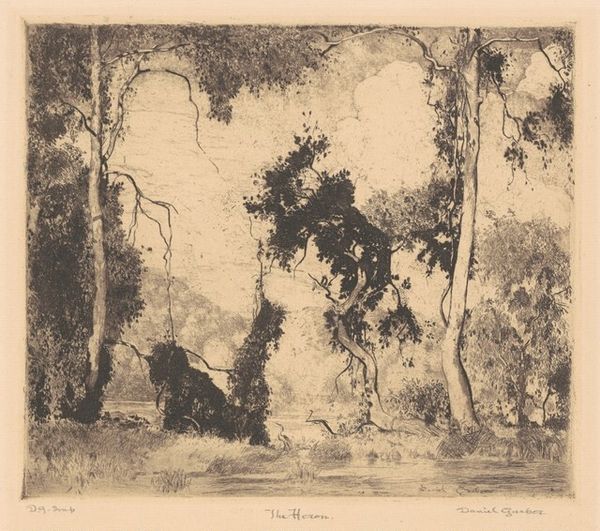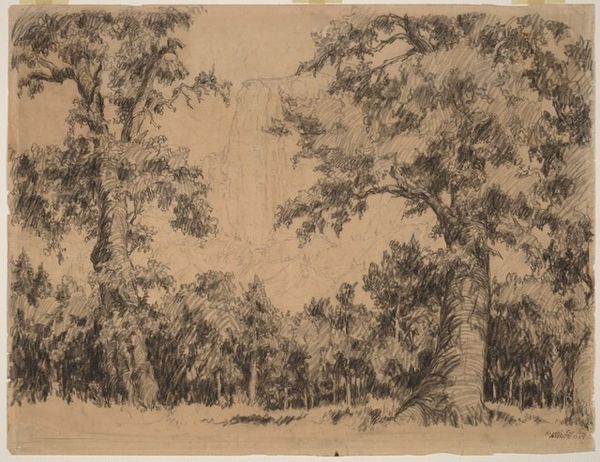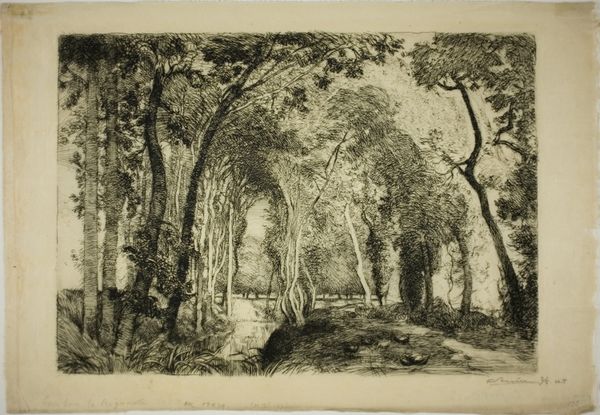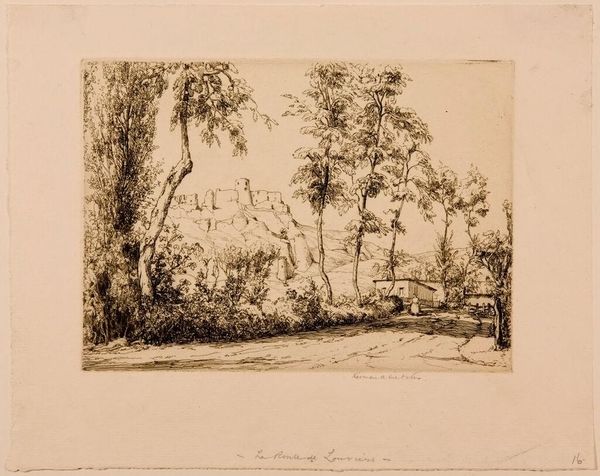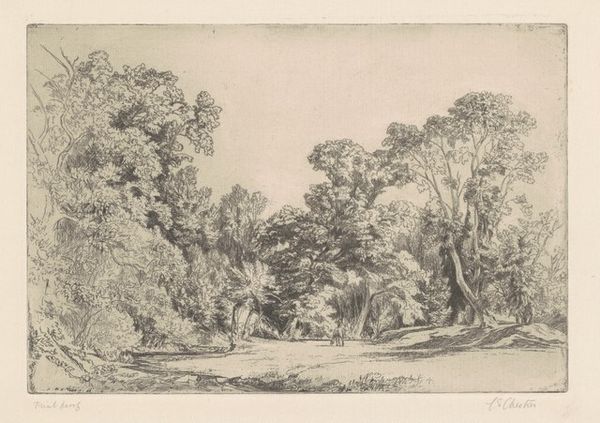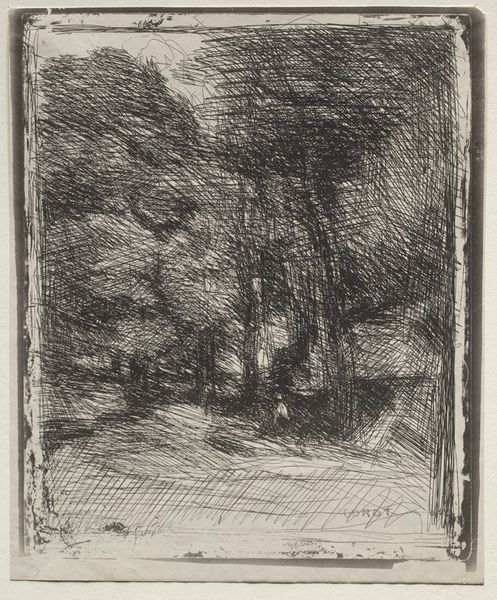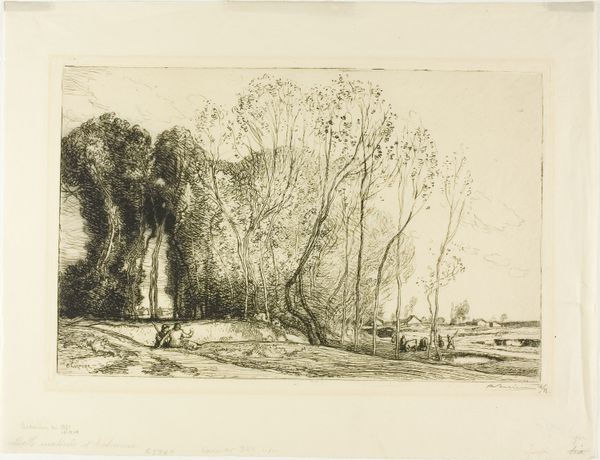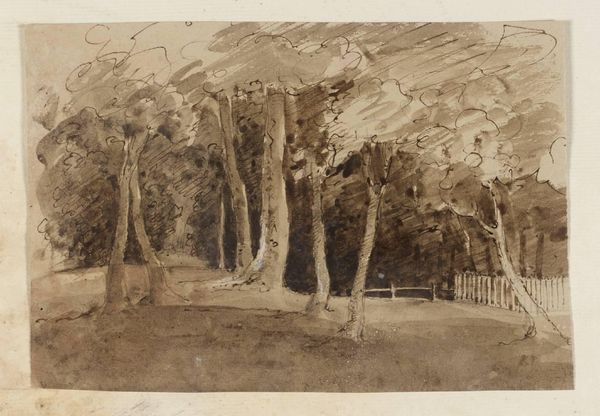
print, etching
# print
#
etching
#
landscape
#
geometric
#
line
Copyright: National Gallery of Art: CC0 1.0
Curator: David Young Cameron’s etching, "The Avenue," from 1905 presents a striking study in light and shadow through remarkably economical means. Editor: The immediate feel I get is one of subdued mystery. The avenue recedes into this blurry background and the stark dark foreground creates a strong contrast, don't you think? It feels like a stage set before the players arrive, pregnant with untold dramas. Curator: Precisely. The atmospheric quality stems from Cameron's expert handling of the etching process. It seems the crosshatching and the varying depths of the etched lines would dictate tonal values. We see how a matrix can produce varying sensations and, with this particular method, conjure feelings of anticipation. Editor: Absolutely, I love how the bare minimum is given—only suggestions of detail. I mean, are those birches? And the way the path disappears...it’s like an invitation into a half-remembered dream. There’s a deliberate incompleteness that fuels the imagination, makes me wonder, was this some personal space he captured? Curator: What fascinates me is the production itself, how an image of this scale and apparent intricacy comes from direct labor using acid and metal to realize repeatable impressions. The commercial context for prints also needs factoring in. Did such images enable wider ownership of artwork? Editor: Yes! It is easy to see how many copies of the artwork can come to existence, since once you’ve completed the metal matrix you can just keep producing. I hadn’t thought of it quite that way, but now it seems very much of its time: the rise of industrialized image creation! All the social questions involved with it, too! Thanks. Curator: Thanks for adding that nuance. Reflecting on "The Avenue," it reminds us how technical artistry combined with clever market choices can capture both the eye and imagination even to this day. Editor: And it's precisely that blending of technique and evocative spirit that makes the piece stay with you, long after you’ve moved on to the next artwork. It really pulls at that inner artist.
Comments
No comments
Be the first to comment and join the conversation on the ultimate creative platform.
